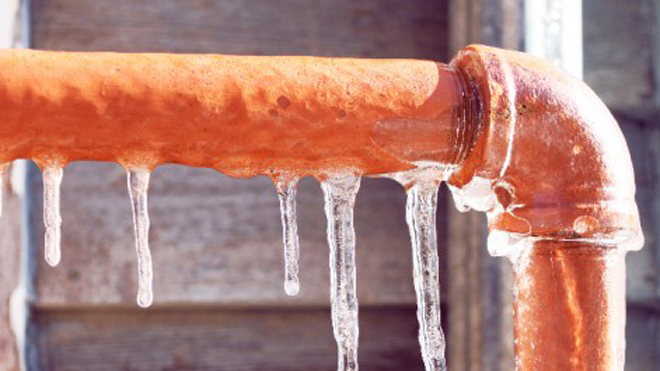Protecting Against Frozen Plumbing in Winter: Essential Tips
Protecting Against Frozen Plumbing in Winter: Essential Tips
Blog Article
Are you currently trying to find advice concerning How to Prevent Your Pipes From Freezing?

Winter can ruin your pipes, especially by freezing pipes. Right here's how to prevent it from happening and what to do if it does.
Intro
As temperature levels decrease, the risk of icy pipelines boosts, potentially leading to pricey repair services and water damage. Understanding just how to avoid icy pipes is critical for house owners in cold environments.
Prevention Tips
Insulating susceptible pipelines
Cover pipelines in insulation sleeves or use heat tape to safeguard them from freezing temperature levels. Concentrate on pipelines in unheated or outside locations of the home.
Home heating strategies
Maintain indoor rooms properly heated, specifically areas with plumbing. Open cupboard doors to allow warm air to circulate around pipes under sinks.
Exactly how to identify icy pipelines
Seek lowered water circulation from faucets, unusual odors or noises from pipes, and visible frost on revealed pipelines.
Long-Term Solutions
Structural modifications
Consider rerouting pipelines far from exterior wall surfaces or unheated locations. Add added insulation to attics, basements, and crawl spaces.
Updating insulation
Invest in premium insulation for pipelines, attic rooms, and walls. Appropriate insulation helps keep consistent temperature levels and decreases the threat of icy pipes.
Shielding Outside Pipes
Garden pipes and outdoor faucets
Separate and drain garden tubes before wintertime. Set up frost-proof faucets or cover outdoor faucets with shielded caps.
Understanding Frozen Pipes
What creates pipelines to freeze?
Pipes freeze when subjected to temperature levels below 32 ° F (0 ° C) for prolonged durations. As water inside the pipelines ices up, it increases, taxing the pipeline walls and potentially causing them to burst.
Risks and damages
Frozen pipes can result in water system disturbances, residential or commercial property damage, and expensive repairs. Ruptured pipes can flooding homes and trigger substantial architectural damages.
Indicators of Frozen Pipeline
Recognizing icy pipelines early can avoid them from breaking.
What to Do If Your Pipelines Freeze
Immediate actions to take
If you think icy pipes, maintain faucets available to relieve pressure as the ice thaws. Make use of a hairdryer or towels taken in warm water to thaw pipes gradually.
Conclusion
Avoiding frozen pipelines calls for proactive steps and quick reactions. By recognizing the reasons, indicators, and safety nets, homeowners can safeguard their plumbing throughout winter.
6 Proven Ways to Prevent Frozen Pipes and Protect Your Home
Disconnect and Drain Garden Hoses
Before winter arrives, start by disconnecting your garden hoses and draining any remaining water. Close the shut-off valves that supply outdoor hose bibs and leave the outdoor faucet open to allow any residual water to drain. For extra protection, consider using faucet covers throughout the colder months. It’s also important to drain water from any sprinkler supply lines following the manufacturer’s directions.
Insulate Exposed Pipes
Insulating your pipes is an effective way to prevent freezing. Pipe insulation is readily available at home improvement stores and is relatively inexpensive. Pay close attention to pipes in unheated areas such as the attic, basement, crawl spaces, or garage. Apply foam insulation generously to create a buffer against the cold. You can also wrap your pipes in heat tape or thermostat-controlled heat cables for added warmth.
Seal Air Leaks
Inspect your home for any cracks or openings that could let in cold air. Seal any holes around the piping in interior or exterior walls, as well as the sill plates where your home rests on its foundation. Additionally, make sure to keep your garage door closed unless you’re entering or exiting. Leaving it open creates a significant air leak that can lead to frozen pipes.
Allow Warm Air Circulation
During cold snaps, it’s essential to allow warm air to circulate evenly throughout your home. Leave interior doors ajar to promote better airflow. Open kitchen and bathroom cabinets to help distribute heat consistently around the rooms. If you have small children or pets, be sure to remove any household chemicals or potentially harmful cleaners from open cabinets for safety.
Let Faucets Drip
A small trickle of water can make a big difference in preventing ice formation inside your pipes. When temperatures drop significantly, start a drip of water from all faucets served by exposed pipes. This continuous flow helps prevent the water from freezing. Additionally, running a few faucets slightly can relieve pressure inside the pipes, reducing the chances of a rupture if the water inside does freeze.
https://choateshvac.com/6-proven-ways-to-prevent-frozen-pipes-and-protect-your-home/

We hope you enjoyed reading our excerpt about Helpful Tips to Prevent Frozen Pipes this Winter. Thanks so much for finding the time to browse our post. You should take a moment to distribute this blog post if you appreciated it. Thank-you for taking the time to read it.
Call Today Report this page